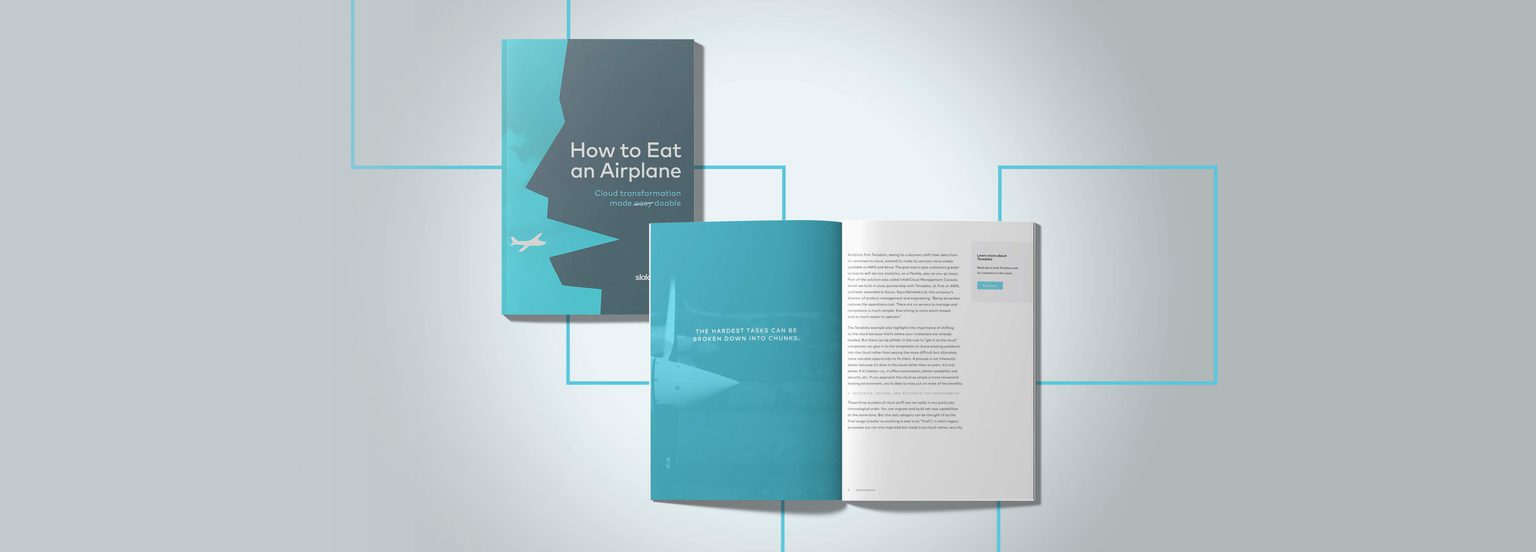
Whitepaper
How to Eat an Airplane: Cloud Transformation Made Easy
Feel like everyone’s got this cloud thing figured out but you? Here’s an explanation of what it is, why it matters to your business, and how to make your move.
Plain (plane?) talk: What the cloud is and why you need it
The cloud in its most basic form – networked computing and remote operations and storage – is as old as the internet itself. What’s (relatively) new is the business model that calls for things like servers and basic IT infrastructure to be purchased from cloud providers. Usually one of the big three: AWS, Azure, and Google.
The basic pitch: Because you pay only for what you use, you can invest in exactly the IT resources you need, and no more. Free from the need for in-house expertise in tech, your organization can focus on core business functions. And the infrastructure (and servers, and whatever else you get via the cloud) will not only be more reliable, it will also give you access to emerging technologies like AI that are being developed at a level and speed by cloud providers far beyond what you could afford on your own. And the time it takes to bring apps and other new products to market will be a fraction of what it would be if you had to deal with every aspect of deploying them yourself.
Is it all hype? The short answer: no. But the pressure to “get on the cloud” can cause unnecessary anxiety when what we mean by that term is not clearly articulated. Demystifying the process will give you the confidence to get started. Spoiler alert: “getting on the cloud” is not really the goal anyway. Achieving your business outcomes is.
But we’re getting ahead of ourselves.
What is the cloud?
No, really. What is it?

Let’s go back to the very basics. (If you find this too basic, please skip to next section.) Think of computing in layers. The top layers are what’s closest to the user. If you use a traditional PC, creating and saving files onto your hard drive in the manner of our ancestors, and do nothing else, congratulations! You are 100% not on the cloud. The second you connect to the internet and get data in the form of email and webpages served through your browser, you are technically (though minimally) “on the cloud.”
On the other end of the spectrum is a Chromebook – a device even more in the cloud than a mobile phone, which generally still requires you to download and install apps. Software physically installed on a Chromebook is minimal. Just enough to access and run web-based apps. The apps themselves, the computing power that runs the apps, the location of your saved files – all that stuff is out there somewhere in the salt mines of Utah, the wilds of Australia, or wherever the servers are.
There are many versions of this chart floating around the web. Some of them show where in the chain the cutoff is for Software as a Service (SaaS), Platform as a Service(PaaS), and other aaSes, but those terms aren’t necessarily great for thinking clearly about the cloud. This one is simplified to give a quick conceptual understanding:
If there was a one-size-fits-all, off-the-shelf solution like Chromebooks to meet the needs of businesses, we wouldn’t be having this talk. The needs of a telecom giant, healthcare provider, or whatever industry you’re in, are infinitely more complex than those of an individual consumer. But the promise of the cloud is analogous to the promise of a Chromebook: you can make a minimal investment in hardware, and access – via the cloud – all the necessary IT infrastructure you need. Infrastructure far more advanced than you could build yourself, maintained by a vast team of experts who do nothing else.
WHITEPAPER
Download How to Eat an Airplane
